Understanding the stability of a standing desk can be a difficult task. The biggest reason for this is because stability is one of the most subjective things about standing desks. After talking with our OEM K&A Mfg., it became obvious we needed to create a machine that could accurately and objectively measure a standing desk frames deflection. With this machine we would be able to easily compare two or more standing desks stability.
This post shows the results for the top 5 most stable standing desks we have tested on the WobbleMeter to date. If you’d like to see the results of all the standing desks we’ve tested, please visit the complete WobbleMeter Results page.
Full Disclaimer: We are an office furniture dealer and sell some of the products we review. To learn more about the products we sell, our review process and why you can trust us, please visit: Why we’re different. Who is BTOD.com and The Breakroom Blog?
Top 5 Most Stable Standing Desks in 2025
- NewHeights XT – 82 Overall WobbleMeter Score
- IKEA Idasen – 114 Overall WobbleMeter Score
- VertDesk v3 – 116 Overall WobbleMeter Score
- VARIDESK ProDesk 48 – 130 Overall WobbleMeter Score
- Uplift v2 Commercial – 132 Overall WobbleMeter Score
- 12 Things To Consider When Buying A Stable Standing Desk
What is the WobbleMeter?
If you’ve never had the chance to read our WobbleMeter posts, you’re probably wondering what it is? In short, The WobbleMeter was designed to provide an objective method of measuring a standing desks wobble and rocking motions. In order to keep our stability test posts short and to the point, we have created a page specifically for additional information on the WobbleMeter and how it functions. To learn more, please visit our Using the WobbleMeter for Standardized Stability Testing post.
WobbleMeter Score Range Guide
For 30″, 42″ and 46″ Height Testing

0-20 = Excellent Stability
Almost all of the desks tested at sitting height will score between 0-20. This is our baseline for excellent stability since most standing desks provide excellent stability at their lowest heights. Users in this range will not notice motion.
21-30 = Very Good to Good Stability
Between 20-30 most users will not notice the small amount of motion in this range.
31-40 = Good to Fair Stability
Between 31-40 some users may begin to notice the amount of motion in this range. This is especially true the closer the score is to 40.
41-50 = Fair to Bad Stability
Between 41-50 most users will notice the amount of motion in this range. This is especially true the closer the score is to 50.
51-60+ = Very Bad Stability
51-60+ all users will notice the amount of motion in this range. This is especially true for scores that are above 60.
1. NewHeights XT – Overall Score 82
Elegante XT Price: Starting at $2069.99 Buy at BTOD.com
See Full NewHeights XT WobbleMeter Results >>
WobbleMeter Results
The NewHeights XT is the most stable standing desk that we’ve tested on the WobbleMeter to date. Looking closer at the results, you’ll notice that the XT was exceptional with its left to right wobble deflection scores. In fact, it’s wobble score was less than half the closest competitor for wobble. It ranked second overall for front to back rocking tests. 
2. IKEA Idasen – Overall Score 114
IKEA Idasen Price: Starting at $600.00 + Shipping Buy at IKEA.com
See Full IKEA Idasen WobbleMeter Results >>
WobbleMeter Results
The IKEA Idasen is our second ranked overall for stability. It ranked fifth for left to right wobble testing, but was the most stable desk tested for front to back rocking motions.
3. VertDesk v3 – Overall Score 116
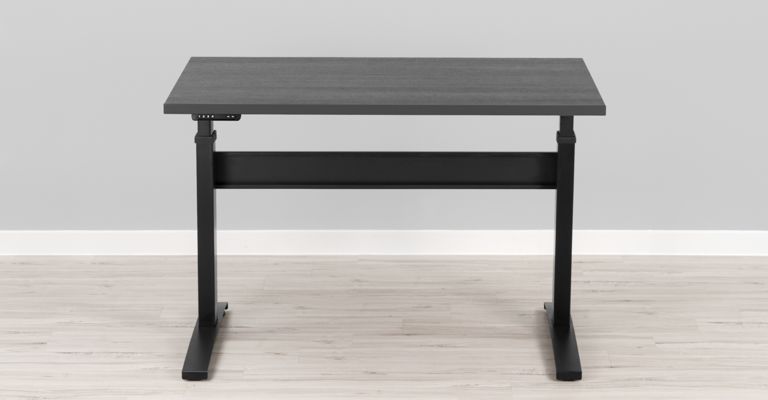
VertDesk v3 Price: Starting at $839.99 Buy at BTOD.com
See Full VertDesk v3 WobbleMeter Results >>
Stability Test Results
The third ranked desk on our list is our VertDesk v3. It ranked third for wobble tests. It ranked 4th for rocking tests.
4. VariDesk ProDesk 48 Electric – Overall Score 132
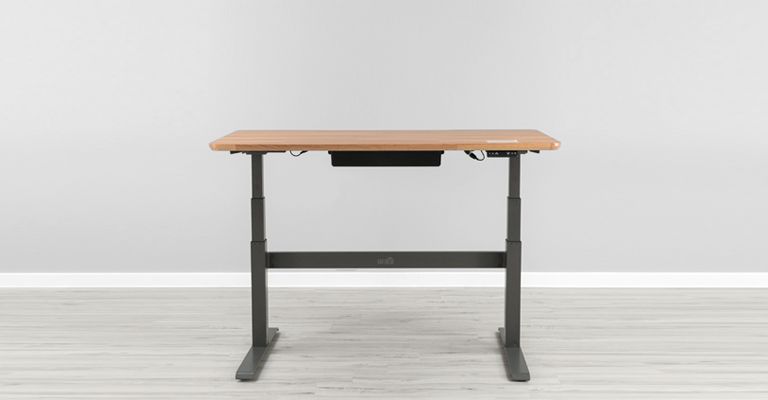
ProDesk 48 Price: Currently Unavailable Buy at Amazon.com
See Full VariDesk ProDesk 48 WobbleMeter Results >>
Stability Test Results
Fourth ranked is the VariDesk ProDesk 48. Ranked fourth for wobble tests. Ranked third for rocking tests.
5. Uplift v2 Commercial – 132 Overall Score
Uplift v2 Commercial Price: Starting at $608.00 Buy at Amazon.com
See Full Uplift v2 Commercial WobbleMeter Results >>
Stability Test Results
12 Things To Consider When Selecting A Stable Standing DeskThe suggestions below will not guarantee the new desk you select is stable. I have said this over and over throughout my posts; a standing desk will only be as stable as its weakest point. Even if you check the box with six out of seven requirements outlined for a stable desk, the seventh requirement could prove to be a problem for stability. The information provided in the lists below are more of a guideline of what to look for. Armed with knowledge, you will know how to avoid problems that exist in many of the brands available.
1. Traditional Cross Support
One of the most overlooked components of a standing desk is a traditional cross support system. Simple physics should explain the need for this, especially when a desk is raised beyond sitting height. What was once a staple to the design of a standing desk has since gone away for many of the products available today. There are a host of reasons why this is possible. While some users might not love the look of a cross support, the benefit is impossible to ignore. When done correctly, the traditional cross support can significantly reduce lateral wobble on most frames.
2. Proper Cross Support Design
Unfortunately, not all cross supports were created equal. Just because the brand you like included one, doesn’t mean it will add stability to the frame. One of the biggest problems we’ve found is with expandable cross supports. While this might minimize inventory, it also opens the door for unnecessary movement. With the leverage of the entire desk, these weak points become glaring issues. Once that happens, the benefits of a cross support will be significantly reduced.
It’s also important that the cross support has a good connection to the frame. Movement here will mean your desk will still exhibit some wobble issues.
Last the cross support needs to be tall enough to be effective. Our OEM K&A Mfg. Inc wrote a post explaining why standing desks wobble. Their second illustration shows how a well-designed cross support acts like the X-brace design found on many bridges. When a cross support is not tall enough, the X is not well defined and will not create the strength required to work effectively.
3. Permanent Frame Connections
The ultimate solution, when it comes to stability, is fewer moving parts. When a desk comes with the feet and upper supports pre-assembled to the columns, this can be a perk. When the feet and upper supports are welded to the columns you can’t get much more permanent. When these parts are welded, it significantly reduces the chance for them to loosen over time.
4. Locking Washers and/or Loctite For Bolts
Most of the frames that we have tested require users to attach the feet and upper supports to the column with bolts included in the packaging. This makes sense, since most are trying to minimize shipping costs domestically and sourcing the products globally. Unfortunately, we have only had a handful of brands include loctite and locking washers for these bolted connections. The issue is that as a desk moves up and down, over time, the bolts start to back out on their own.
5. High Quality Glide Systems
Understanding how glide systems function within the standing desk is important. There are two main functions; the first is related to reducing friction between metal columns and the second is to fill the gap between the columns. The use of high quality glides is essential to a standing desks’ ability to function at a high level over the course of its lifetime. The standard in the industry for material used to manufacturer high quality glides is known as Delrin Acetal from Dupont. The material is best known for its ability to hold up well over high cycle counts.
As glide systems begin to wear down the fit between each column will change. This change will not only create stability issues as additional play between the columns, but also has the potential to create binding problems. Binding can be a massive headache for manufacturers, since it is the leading cause of fall positives found with anti-collision safety functions in electric standing desks. When this happens, manufacturers have two options. They can send new columns to the customer, or reduce the sensitivity in the control box for the anti-collision mechanism.
6. Properly Fit Glide Systems
Having properly fit glides is almost as important as the quality of the glides themselves. Pairing the two creates a high functioning system. We’ve found that desks that don’t do a good job with glide fit, have stability issues at mid to high ranges. The problem is that the glide fitting process requires adequate training. When glides are too tight, binding issues are created. When they are too loose, stability issues occur. Getting the perfect fit can be an intricate process. If a desk starts out with poorly fit glides, they also tend to wear unevenly. This brings us full circle back to binding issues that create problems within the anti-collision systems. While these small plastic components are often overlooked by consumers, they are important if you want your desk to last for years to come.
7. Top and Bottom Glides Required
Standing desks without glides on both top and bottom are a stability nightmare. When you think about how these components fill the gap between the columns, it seems obvious they are needed on the top and bottom of the frame. Without it, there is no way to counteract the movement in the frame when rocked or wobbled. This additional play in the columns is only exaggerated as the desk is raised to standing heights.
8. Good Connection Between Top and Frame
The connection between the frame and your desktop is important. We’ve found that some desks attempt to create easier assembly processes, which leave this connection with too much play. Considering the weight of the top alone, this leverage can create awkward twisting and rocking motions. Products like the IKEA Bekant only use cheap plastic fasteners to connect their surface and frame. If you add a lot of weight to your desk surfaces, this would be a major cause for concern.
9. Quality Column Construction
From the outside, most of the electric standing desks that we have tested look similar. Rectangular or rounded tubes are the most commonly used style of legs (columns). When you open the frames up, you get a better idea of how solid each of these columns really is. Even if steel is used, the thickness of the steel is important to how much flexing can occur at standing heights. Some desks we’ve tested use more expensive materials like extruded aluminum. Aluminum is more susceptible to flexing; the thickness of the tube and added ribbing inside the tube are important to reduce this flexing. Unfortunately, all aluminum extruded columns we’ve seen exhibit some amount of flexing. Because of this, it reduced the desks’ stability scores that utilize this material.
10. Adequate Overlap within Columns
The amount of overlap left inside a column can either make or break a standing desks’ front to back stability at tall heights. When manufacturers try to maximize the range of motion, they tend to leave less of the column overlapped inside the outer column. When this happens, there isn’t enough distance between the outer column glides and the inner column glides to counteract the leverage created from a top heavy standing desk. This is where many standing desks’ front to back rocking motions come from.
11. Good Connection From Foot and Adjustable Glide
To account for uneven floors, most standing desks have adjustable foot glides to level out the desk. How these glides attach to the foot are crucial to the desks’ stability. We have seen frames that tap the bottom foot plate, but the steel was too thin for more than two or three lines of threading to screw the glide into. Some tapped solutions we have seen were better than others, mostly because a thicker piece of steel was used for the foot. The preferred methods are the use a threaded rivnut or welding a nut inside the foot. These options have proven to create a more secure connection for the glide.
12. Strong Foot Design
Much like the foundation of a home, a standing desk will only be as stable as the feet they are built on. Utilizing materials that provide a good amount of rigidity is a must for the foot design. With the leverage of the entire frame, weak feet designs have shown to flex and create bad rocking or wobble motions. Formed steel and molded aluminum have proven to be the best solutions to create a stable foot design.
Bottom Line
After reviewing this list you can see that all of desks in our most stable list show some signs of motion. The difference is these brands have done the best job minimizing this motion through the mid to tall heights. Without a direct focus on stability in a standing desk, you get a pretty good idea how hard it is for standing desks to be stable.
Additional Standing Desk Resources


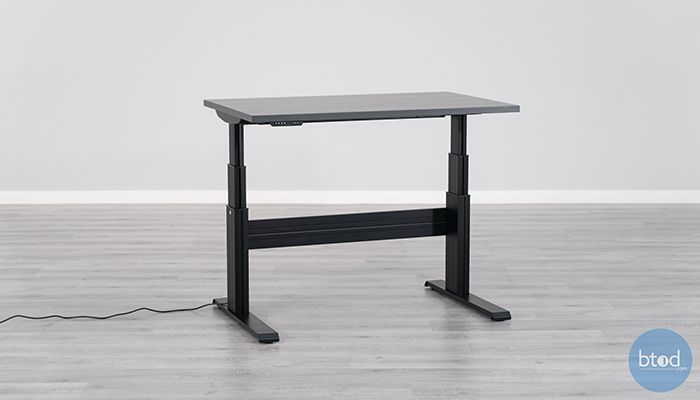
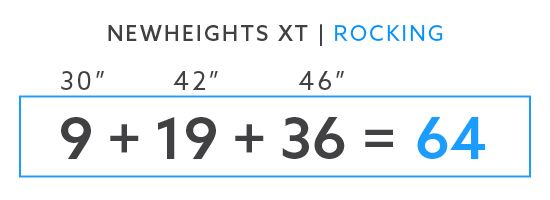


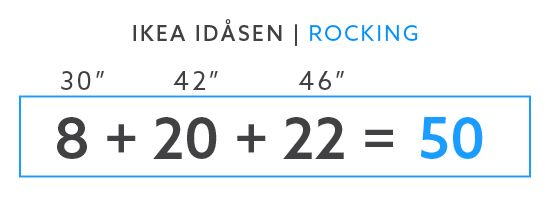

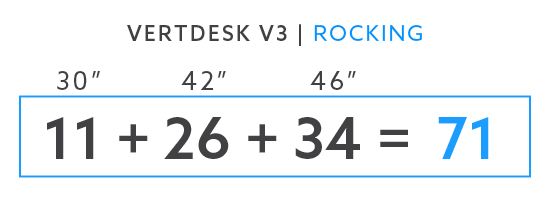
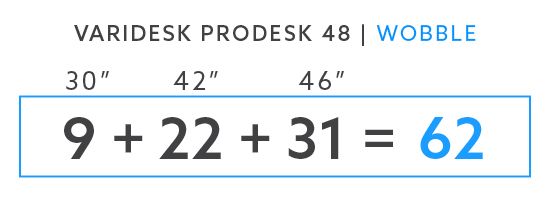
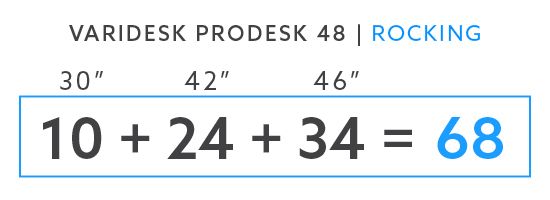
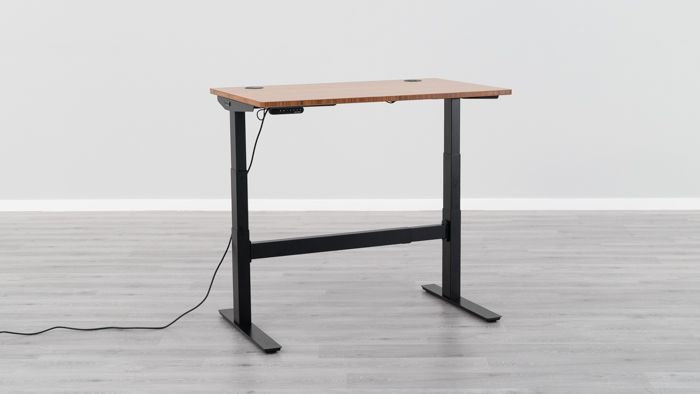
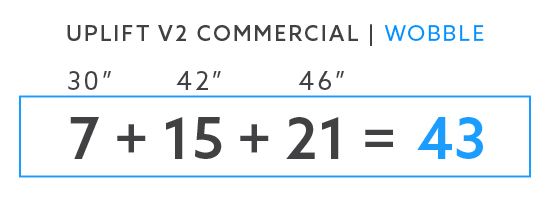
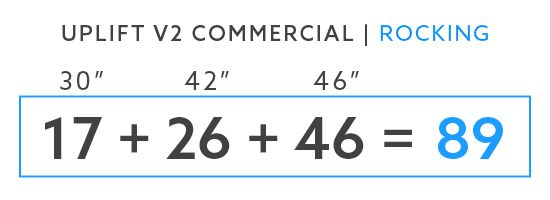



Andy Record
The link to “See Full Uplift v2 Commercial WobbleMeter Results” is pointing to the wrong page. It’s currently pointing to the varidesk results.
Greg Knighton
Great catch! Thank you